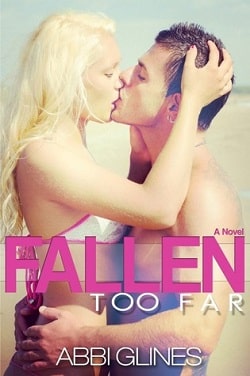, or it’s at the City Hall, which is that big building over there.” He pointed out the large square building to our left, at the spot where the fountain square narrowed into the Place du General de Gaulle. “I can’t quite make it out. But the first bell, the one you heard a few minutes ago, that’s up at the château.” He used the proper French word for the castle. “Which reminds me,” he went on. “Do you have any plans for this morning? Because Simon and I are going up to the château to putter around for an hour or so, and we thought if you didn’t have anything else to do…”
Well, I certainly wasn’t going to waste my first full day in Chinon hanging about the hotel in the hope that Harry would show up. He’d be here soon enough, I thought drily, and in the meantime there was no law that prevented me from touring on my own. “I’d love to come,” I told Paul. “Thanks.”
“Terrific. It’s really something to see, and you shouldn’t waste this sunshine. The weather here can be kind of unpredictable.”
We both heard the stern knock from the corridor.
“That’ll be Thierry,” Paul said, with a wink. “He’ll be irritated.”
“Wouldn’t it be simpler to just leave the curtain off, instead of always hanging it back up again?”
“Oh, sure.” He shrugged. “But it’s sort of a game for them, I think, and Simon considers it a personal challenge. Simon,” Paul told me in a positive tone, “loves a challenge.”
Which was, I learned as we set out after breakfast, quite a thorough summing up of Simon’s character.
He took charge of our impromptu tour party the moment we passed through the front doors of the hotel and stepped onto the pavement. “OK,” he began firmly, “since this is Emily’s first real day in Chinon, I think we should take her down the rue Voltaire first, and then up to the château from there. It’s a lot easier than going straight up those steps, anyway.”
He meant the broad, inviting flight of cobbled steps that cut between the buildings to our right, in a direct line with the fountain. The steps themselves didn’t appear to be particularly steep, but it looked a long way up. I could just see the small cluster of yellow-white houses peering over the edge of the cliff that rimmed the town.
“What is this stone, do you know?” I asked my self-appointed guides. “All the buildings here seem to be made of it.”
Simon proudly supplied the answer. “It’s tufa-stone. Tuffeau in French. It’s the same stone they used to build Westminster Abbey, as a matter of fact.”
“He’s been reading the guide books,” Paul explained. “It’s just a porous limestone, really. That’s what the cliffs round here are made of.”
Tufa-stone. I filed the name away in my memory. On some of the buildings it almost looked like marble, hard and smooth and faintly reflective, cut in enormous blocks that had been fitted so expertly one could hardly spot the seams. Coupled with the slate-blue pointed roofs, it gave the town a certain unity of color and style that lovingly embraced the eye. Most of the shutters were open, now—painted metal shutters stained with rust, and older wooden ones, unpainted, that hung unevenly on their hinges, fastened back against the walls of their respective houses by ancient iron latches. I could understand why Simon found his curtain rod such a nuisance. French windows begged to be flung wide—it seemed a crime somehow to keep them closed.
The rue Voltaire led off the square as well, a narrow cobbled street that cut a line between the cliffs and the river. It was a lovely street, tastefully restored and rich in atmosphere, but I only caught the briefest glimpses of its tight-packed houses as Simon drove us past them at a breathless pace.
“And here,” he said, coming to a full and sudden stop where a narrow street angled across the rue Voltaire, “is the Great Crossroads. Well, it was a lot greater in the old days, I guess. This,” he told me, pointing up the smaller sloping street, “was how people used to get to the château back then. And that well over there, against the wall, is where Joan of Arc got off her horse when she came to Chinon to see the Dauphin.”
“Ah.” I smiled. It wasn’t that I didn’t like Joan of Arc—I had in fact been fascinated by her in my younger days, but having lived in France I’d gorged myself on Joan of Arc relics and Joan of Arc books and Joan of Arc historic sites until, in the end, it had produced the same effect as had the one too many Rusty Nails I’d drunk the night of my twenty-first birthday. All these years later, I couldn’t face a Rusty Nail without a shudder.
Still, so as not to ruin Simon’s tour I dutifully inspected the well and made the proper noises. Satisfied, he turned to lead the way up the tilting little street. “We go up here. Just watch your step, it’s pretty rough.”
And pretty steep, in spite of the fact that the road bent back upon itself several times in an attempt to soften the grade of the ascent. Halfway up I stumbled on the jutting cobblestones and paused to catch my breath.
“Small wonder Joan of Arc got off her horse,” I said, between gulps of air. “No self-respecting horse would want to make this climb.”
Paul laughed and moved steadily past me. “You get used to it.”
I wasn’t so sure. “Is this really easier than going up the steps?”
“Yes,” both boys averred, in unison.
Simon grinned, and pushed the hair back from his face. “Neil goes up and down those steps a few times a day,” he informed me, “for exercise. He says musicians need to keep in shape.”
“Bully for Neil,” I muttered, and forced my wobbling legs to push onwards. Just when I thought they couldn’t possibly carry me any further, we cleared the final corner and found ourselves gazing out across the rooftops to the gently snaking river. It was a breathless view. The gardens of the closer houses had been terraced upwards to the level of the cliffs, a checkerboard of trees and flowers hemmed by ivied walls turned crimson in the autumn air.
A final slope, five paces more, and out we stepped onto a modern road that ran along the level of the cliff. Facing us, a cracked and crumbling wall rose starkly up one level more, its sheer bulk draped with clinging clumps of ivy broken here and there by leaning doors that marked the entrance to some long-abandoned dwelling.
“There’s the château,” said Simon, pointing.
“Give us a chance,” I pleaded, slumping back against the wall. “Wait till my vision clears.”
Simon wasn’t listening—he was already several steps ahead, walking with a brisk and purposeful step, but Paul hung back to wait for me. “Not far now,” he promised. “We’re almost there.”
I glanced after Simon, noticing not the soaring narrow tower that served as gateway to the château, but the alarming slope of the black asphalt road ahead. “More climbing?” I asked, weakly.















